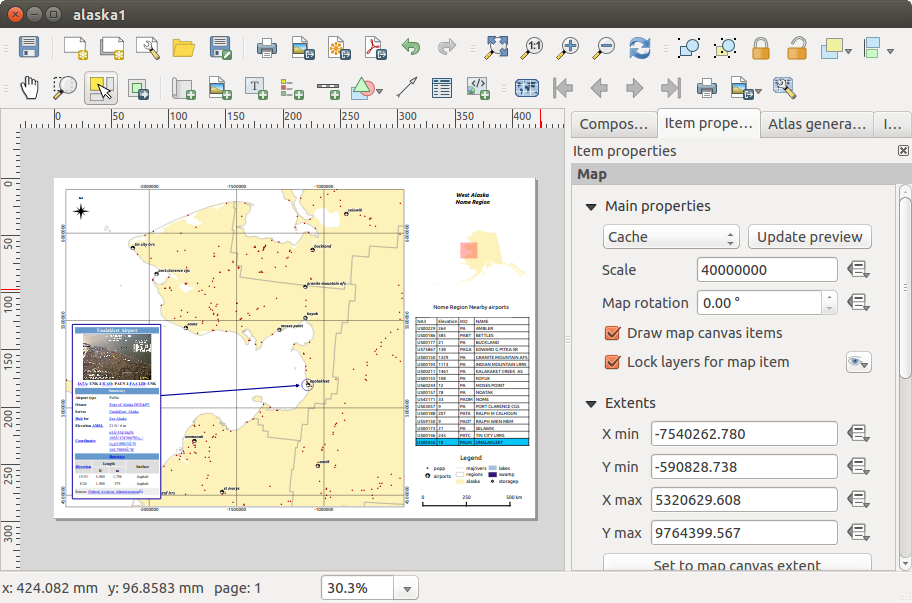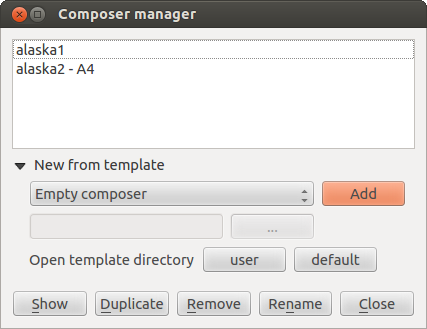With the Print Composer you can create nice maps and atlasses that can be printed or saved as PDF-file, an image or an SVG-file. This is a powerfull way to share geographical information produced with QGIS that can be included in reports or published.
The Print Composer provides growing layout and printing capabilities. It allows
you to add elements such as the QGIS map canvas, text labels, images, legends, scale bars, basic
shapes, arrows, attribute tables and HTML frames. You can size, group, align, position and rotate each
element and adjust the properties to create your layout. The layout can be printed
or exported to image formats, PostScript, PDF or to SVG (export to SVG is not
working properly with some recent Qt4 versions; you should try and check
individually on your system). You can save the layout as a template and load it again
in another session. Finally, generating several maps based on a template can be done through the atlas generator.
See a list of tools in table_composer_1:
Toate instrumentele din Compozitorul de Hărți sunt disponibile atât în meniuri, cât și ca pictograme în bara de instrumente. Bara de instrumente poate fi activată și dezactivată, prin apăsarea butonului din dreapta al mouse-ului deasupra barei de instrumente.
Primii pași
Deschide un nou Șablon al Compozitorului de Hărți
Before you start to work with the Print Composer, you need to load some raster
and vector layers in the QGIS map canvas and adapt their properties to suit your
own convenience. After everything is rendered and symbolized to your liking,
click the  New Print Composer icon in the toolbar or
choose . You will be prompted to
choose a title for the new Composer.
New Print Composer icon in the toolbar or
choose . You will be prompted to
choose a title for the new Composer.
Generalități despre Compozitorul de Hărți
Opening the Print Composer provides you with a blank canvas that represents the paper surface when using the print option. Initially you find buttons on the left beside the canvas to add map composer items; the current QGIS map canvas, text labels, images, legends, scale bars, basic shapes, arrows, attribute tables and HTML frames. In this toolbar you also find toolbar buttons to navigate, zoom in on an area and pan the view on the composer and toolbar buttons to select a map composer item and to move the contents of the map item.
Figure_composer_overview prezintă o vedere inițială a Compozitorului de Hărți, înainte de adăugarea oricăror elemente.
Figure Composer Overview:
On the right beside the canvas you find two panels.
The upper panel holds the tabs Items and Command History and the lower panel holds the tabs Composition, Item properties and Atlas generation.
Fila Elementelor oferă o listă a tuturor elementelor adăugate în canevasul hărții din compozitor.
- The Command history tab displays a history of all changes applied
to the Print Composer layout. With a mouse click, it is possible to undo and
redo layout steps back and forth to a certain status.
- The Composition tab allows you to set paper size, orientation, the page
background, number of pages and print quality for the output file in dpi. Furthermore, you
can also activate the
 Print as raster checkbox. This means
all items will be converted to raster before printing or saving as PostScript or PDF.
In this tab, you can also customize settings for grid and smart guides.
Print as raster checkbox. This means
all items will be converted to raster before printing or saving as PostScript or PDF.
In this tab, you can also customize settings for grid and smart guides.
- The Item Properties tab displays the properties for the selected
item. Click the
 Select/Move item icon to select
an item (e.g., legend, scale bar or label) on the canvas. Then click the
Item Properties tab and customize the settings for the selected
item.
Select/Move item icon to select
an item (e.g., legend, scale bar or label) on the canvas. Then click the
Item Properties tab and customize the settings for the selected
item.
Fila Atlas generation vă permite să activați generarea unui atlas pentru Compozitorul curent, și vă oferă acces la parametrii săi.
În cele din urmă, puteți salva compoziți cu ajutorul butonului  Salvare Proiect.
Salvare Proiect.
În partea de jos a ferestrei Compozitorului de Hărți, puteți găsi o bară de stare cu poziția mouse-ului, numărul curent al paginii și o casetă combinată pentru a seta nivelul de mărire.
You can add multiple elements to the Composer. It is also possible to have more
than one map view or legend or scale bar in the Print Composer canvas, on one or
several pages. Each element has its own properties and, in the case of the map,
its own extent. If you want to remove any elements from the Composer canvas you
can do that with the Delete or the Backspace key.
Opțiuni ale Compozitorului de Hărți
Din puteți seta unele opțiuni care vor fi selectate ca implicite, în timpul lucrului.
Compozițiile implicite vă permit să specificați fontul de folosit, implicit.
- With Grid appearance, you can set the grid style and its color.
There are three types of grid: Dots, Solid lines and Crosses.
Grila și liniile deghidare implicite definesc spațierea, decalajul și toleranța grilei.
Fila compoziției — Configurarea compoziției generale
În fila Compozițiilor, puteți defini setările globale ale compoziției dvs.
Acroșarea la rețea și/sau la ghidajele inteligente poate fi activat din meniul . De asemenea, din acest meniu se pot ascunde, sau afișa, grila și ghidajele inteligente.
Opțiuni comune ale elementelor din Compozitor
Composer items have a set of common properties you will find on the bottom of the Item Properties tab: Position and size, Rotation, Frame,
Background, Item ID and Rendering (See figure_composer_common_1).
Figure Composer Common 1:
Dialogul Position and size vă permite definirea dimensiunii și a poziției cadrului care conține elementul. Puteți alege, de asemenea, care Punct de Referință va fi setat la coordonatele X și Y definite anterior.
Rotirea stabilește rotația elementului (în grade).
- The
 Frame shows or hides the frame around the label.
Use the Frame color and Thickness menus to adjust those properties.
Frame shows or hides the frame around the label.
Use the Frame color and Thickness menus to adjust those properties.
- Use the Background color menu for setting a background color.
With the dialog you can pick a color (see Selectorul de Culoare ).
- Use the Item ID to create a relationship to other Print Composer items. This is used with QGIS server and any potential web
client. You can set an ID on an item (e.g., a map and a label), and then the web client can send data to set a property
(e.g., label text) for that specific item. The GetProjectSettings command will list what items and which IDs are available in a layout.
Modul de Randare pot fi selectate în câmpul opțiunii. Vedți Rendering_Mode.
Note
- If you checked
 Use live-updating color chooser dialogs
in the QGIS general options, the color button will update as soon as you
choose a new color from Color Dialog windows. If not, you need to
close the Color Dialog.
Use live-updating color chooser dialogs
in the QGIS general options, the color button will update as soon as you
choose a new color from Color Dialog windows. If not, you need to
close the Color Dialog.
- The
 Data defined override icon next to a field
means that you can associate the field with data in the map item or use
expressions. These are particularly helpful with atlas generation
(See atlas_data_defined_overrides).
Data defined override icon next to a field
means that you can associate the field with data in the map item or use
expressions. These are particularly helpful with atlas generation
(See atlas_data_defined_overrides).
Elementele Compozitorului
Elementul Hartă
Click on the  Add new map toolbar button in the Print
Composer toolbar to add the QGIS map canvas. Now, drag a rectangle onto the Composer
canvas with the left mouse button to add the map. To display the current map, you
can choose between three different modes in the map Item Properties
tab:
Add new map toolbar button in the Print
Composer toolbar to add the QGIS map canvas. Now, drag a rectangle onto the Composer
canvas with the left mouse button to add the map. To display the current map, you
can choose between three different modes in the map Item Properties
tab:
Cache reprezintă modul de previzualizare implicit pentru hărțile nou adăugate în Compozitorul de Hărți.
You can resize the map element by clicking on the  Select/Move item button, selecting the element, and dragging one of the
blue handles in the corner of the map. With the map selected, you can now adapt
more properties in the map Item Properties tab.
Select/Move item button, selecting the element, and dragging one of the
blue handles in the corner of the map. With the map selected, you can now adapt
more properties in the map Item Properties tab.
To move layers within the map element, select the map element, click the
 Move item content icon and move the layers within
the map item frame with the left mouse button. After you have found the right place
for an item, you can lock the item position within the Print Composer
canvas. Select the map item and use the toolbar
Move item content icon and move the layers within
the map item frame with the left mouse button. After you have found the right place
for an item, you can lock the item position within the Print Composer
canvas. Select the map item and use the toolbar  Lock Selected Items or the tab to Lock the
item. A locked item can only be selected using the
tab. Once selected you can use the tab to unlock individual items. The
Lock Selected Items or the tab to Lock the
item. A locked item can only be selected using the
tab. Once selected you can use the tab to unlock individual items. The  Unlock All Items icon will unlock all locked composer items.
Unlock All Items icon will unlock all locked composer items.
Proprietăți principale
The Main properties dialog of the map Item Properties tab provides the
following functionalities (see figure_composer_map_1):
Figure Composer Map 1:
Extinderi
Dialogul Extinderilor de pe fila elementului hărții oferă următoarele functionalități (see figure_composer_map_2):
Figure Composer Map 2:
- The Map extents area allows you to specify the map extent using X and Y min/max
values and by clicking the [Set to map canvas extent] button. This button sets
the map extent of the composer map item to the extent of the current map view in the
main QGIS application. The button [View extent in map canvas] does exactly the
opposite, it updates the extent of the map view in the QGIS application to the extent
of the composer map item.
If you change the view on the QGIS map canvas by changing
vector or raster properties, you can update the Print Composer view by selecting
the map element in the Print Composer and clicking the [Update preview] button
in the map Item Properties tab (see figure_composer_map_1).
Grile
The Grids dialog of the map Item Properties tab provides the
possibility to add several grids to a map item.
Cu butoanele plus și minus puteți adăuga sau elimina o grilă selectată.
Cu ajutorul butoanelor în sus și în jos puteți muta o grilă în listă, pentru a seta prioritatea de desenare.
Dacă faceți dublu clic pe grila adăugată îi puteți da un alt nume.
Figure Composer Map 3:
After you have added a grid, you can activate the checkbox  Show grid to overlay a grid onto the
map element. Expand this option to provide a lot of configuration options, see Figure_composer_map_4.
Show grid to overlay a grid onto the
map element. Expand this option to provide a lot of configuration options, see Figure_composer_map_4.
Figure Composer Map 4:
As grid type, you can specify to use a ‘Solid’, ‘Cross’, ‘Markers’ or ‘Frame and annotations only’.
‘Frame and annotations only’ is especially useful when working with rotated maps or reprojected
grids. In the devisions section of the Grid Frame Dialog mentioned below you then have a corresponding setting.
Symbology of the grid can be chosen. See section Rendering_Mode.
Furthermore, you can define an interval in the X and Y directions, an X and Y offset,
and the width used for the cross or line grid type.
Figure Composer Map 5:
Figure Composer map 6:
Prezentare generală
Dialogul Vizualizărilor de pe fila hărții Item Properties oferă următoarele functionalități:
Figure Composer Map 7:
You can choose to create an overview map, which shows the extents of the other map(s)
that are available in the composer. First you need to create the map(s) you want to
include in the overview map. Next you create the map you want to use as the overview
map, just like a normal map.
Cu butoanele plus și minus puteți adăuga sau elimina o vizualizare.
Cu ajutorul butoanelor în sus și în jos puteți muta o vizualizare în listă, pentru a seta prioritatea de desenare.
Open Overviews and press the green plus icon-button to add an overview.
Initially this overview is named ‘Overview 1’ (see Figure_composer_map_7).
You can change the name when you double-click on the overview item in the list
named ‘Overview 1’ and change it to another name.
Când selectați elementul imaginii de ansamblu în lista, îl puteți personaliza.
Elementul Etichetă
To add a label, click the  Add label icon, place the element
with the left mouse button on the Print Composer canvas and position and customize
its appearance in the label Item Properties tab.
Add label icon, place the element
with the left mouse button on the Print Composer canvas and position and customize
its appearance in the label Item Properties tab.
The Item Properties tab of a label item provides the following functionality
for the label item (see Figure_composer_label):
Figure Composer 8:
Proprietăți principale
- The main properties dialog is where the text (HTML or not) or the expression
needed to fill the label is added to the Composer canvas.
- Labels can be interpreted as HTML code: check
 Render as HTML.
You can now insert a URL, a clickable image that links to a web page or something more complex.
Render as HTML.
You can now insert a URL, a clickable image that links to a web page or something more complex.
- You can also insert an expression. Click on [Insert an expression] to open a new dialog.
Build an expression by clicking the functions available in the left side of the panel.
Two special categories can be useful, particularly associated with the atlas functionality:
geometry functions and records functions. At the bottom, a preview of the expression is shown.
Aspectul
- Define Font by clicking on the [Font...] button or a Font color
selecting a color using the color selection tool.
- You can specify different horizontal and vertical margins in mm.
This is the margin from the edge of the composer item. The label can be positioned outside
the bounds of the label e.g. to align label items with other items. In this case you have to
use negative values for the margin.
- Using the Alignment is another way to position your label. Note that when e.g. using
the Horizontal alignment in
 Center Position the
Horizontal margin feature is disabled.
Center Position the
Horizontal margin feature is disabled.
Elementul Imagine
To add an image, click the  Add image icon, place the element
with the left mouse button on the Print Composer canvas and position and customize
its appearance in the image Item Properties tab.
Add image icon, place the element
with the left mouse button on the Print Composer canvas and position and customize
its appearance in the image Item Properties tab.
The picture Item Properties tab provides the following functionalities (see figure_composer_image_1):
Figure Composer image 1:
You first have to select the image you want to display.
There are several ways to set the image source in the Main properties area.
- Use the browse button
 of image source to select a file on your
computer using the browse dialog. The browser will start in the SVG-libraries provided with QGIS.
Besides
of image source to select a file on your
computer using the browse dialog. The browser will start in the SVG-libraries provided with QGIS.
Besides SVG, you can also select other image formats like .png or .jpg.
- You can enter the source directly in the image source text field. You can even provide
a remote URL-address to an image.
- From the Search directories area you can also select an image from loading previews ...
to set the image source.
- Use the data defined button
 to set the image source from a record or using a
regular expression.
to set the image source from a record or using a
regular expression.
With the Resize mode option, you can set how the image is displayed when the frame
is changed, or choose to resize the frame of the image item so it matches the original size of
the image.
Puteți selecta unul din următoarele moduri:
Zoom: Mărește imaginea la dimensiunea cadrului, menținând în același timp raportul aspectului imaginii.
Stretch: Întinde imaginea pentru a se potrivi în interiorul cadrului, ignorând raportul aspectului.
- Clip: Use this mode for raster images only, it sets the size of the image to original image size
without scaling and the frame is used to clip the image, so only the part of the image inside the
frame is visible.
- Zoom and resize frame: Enlarges image to fit frame, then resizes frame to fit resultant image.
Redimensionează cadrul la dimensiunea imaginii: Setează dimensiunea cadrului pentru a se potrivi dimensiunii originale a imaginii, fără scalare.
Selected resize mode can disable the item options ‘Placement’ and ‘Image rotation’.
The Image rotation is active for the resize mode ‘Zoom’ and ‘Clip’.
With Placement you can select the position of the image inside it’s frame.
The Search directories area allows you to add and remove directories with images in SVG format
to the picture database. A preview of the pictures found in the selected directories is shown in a
pane and can be used to select and set the image source.
Images can be rotated with the Image rotation field.
Activating the  Sync with map checkbox synchronizes the rotation of a picture
in the QGIS map canvas (i.e., a rotated north arrow) with the appropriate Print Composer image.
Sync with map checkbox synchronizes the rotation of a picture
in the QGIS map canvas (i.e., a rotated north arrow) with the appropriate Print Composer image.
It is also possible to select a north arrow directly. If you first select a north arrow image from
Search directories and then use the browse button  of the field Image source,
you can now select one of the north arrow from the list as displayed in figure_composer_image_2.
of the field Image source,
you can now select one of the north arrow from the list as displayed in figure_composer_image_2.
Note
Many of the north arrows do not have an ‘N’ added in the north arrow, this is done on
purpose for languages that do not use an ‘N’ for North, so they can use another letter.
Figure Composer Image 2:
Elementul Legendă
To add a map legend, click the  Add new legend icon,
place the element with the left mouse button on the Print Composer canvas and
position and customize the appearance in the legend Item Properties
tab.
Add new legend icon,
place the element with the left mouse button on the Print Composer canvas and
position and customize the appearance in the legend Item Properties
tab.
The Item properties of a legend item tab provides the following
functionalities (see figure_composer_legend_1):
Figure Composer Legend 1:
Proprietăți principale
The Main properties dialog of the legend Item Properties tab
provides the following functionalities (see figure_composer_legend_2):
Figure Composer Legend 2:
În proprietățile principale puteți:
Modifica titlul legendei.
Seta alinierea titlului la Stânga, Centru sau Dreapta.
Puteți alege la care dintre elementele Hărții se va referi legenda curentă din lista de selectare.
Puteți încadra titlului legendei pentru un anumit caracter.
Elementele legendei
The Legend items dialog of the legend Item Properties tab
provides the following functionalities (see figure_composer_legend_3):
Figure Composer Legend 3:
The legend will be updated automatically if  Auto-update is checked.
When Auto-update is unchecked this will give you more control over the legend items.
The icons below the legend items list will be activated.
Auto-update is checked.
When Auto-update is unchecked this will give you more control over the legend items.
The icons below the legend items list will be activated.
The legend items window lists all legend items and allows you to change item order,
group layers, remove and restore items in the list, edit layer names and add a filter.
- The item order can be changed using the [Up] and [Down] buttons or with ‘drag-and-drop’
functionality. The order can not be changed for WMS legend graphics.
Folosiți butonul [Adăugare grup] pentru a adăuga un grup de legendă.
Folosiți butoanele [plus] și [minus] pentru a adăuga sau a elimina straturi.
- The [Edit] button is used to edit the layer-, groupname or title, first you need to
select the legend item.
Butonul [Sigma] adaugă numărul de entități pentru fiecare strat vectorial.
- Use the [filter] button to filter the legend by map content, only the legend items visible
in the map will be listed in the legend.
After changing the symbology in the QGIS main window, you can click on [Update All] to
adapt the changes in the legend element of the Print Composer.
Fonturi, Coloane, Simbol
The Fonts, Columns and Symbol dialogs of the legend
Item Properties tab provide the following functionalities (see figure_composer_legend_4):
Figure Composer Legend 4:
Puteți schimba fontul pentru titlul legendei, pentru grup, subgrup și element (stratul) din elementul legendă. Faceți clic pe un buton de categorie pentru a deschide dialogul Select font.
- You provide the labels with a Color using the advanced color picker, however the selected
color will be given to all font items in the legend..
- Legend items can be arranged over several columns. Set the number of columns in
the Count
 field.
field.
Puteți schimba lățimea și înălțimea simbolului legendei în acest dialog.
WMS LegendGraphic și Spațierea
The WMS LegendGraphic and Spacing dialogs of the legend
Item Properties tab provide the following functionalities (see
figure_composer_legend_5):
Figure Composer Legend 5:
When you have added a WMS layer and you insert a legend composer item, a request will be send to the
WMS server to provide a WMS legend. This Legend will only be shown if the WMS server provides the
GetLegendGraphic capability. The WMS legend content will be provided as a raster image.
WMS LegendGraphic is used to be able to adjust the Legend width and
the Legend height of the WMS legend raster image.
Spacing around title, group, subgroup, symbol, icon label, box space or column space can be customized
through this dialog.
Elementul Scării Grafice 
To add a scale bar, click the  Add new scalebar icon, place
the element with the left mouse button on the Print Composer canvas and position
and customize the appearance in the scale bar Item Properties tab.
Add new scalebar icon, place
the element with the left mouse button on the Print Composer canvas and position
and customize the appearance in the scale bar Item Properties tab.
The Item properties of a scale bar item tab provides the following
functionalities (see figure_composer_scalebar_1):
Figure Composer Scalebar 1:
Proprietăți principale
The Main properties dialog of the scale bar Item Properties tab
provides the following functionalities (see figure_composer_scalebar_2):
Figure Composer Scalebar 2:
În primul rând, alegeți scara grafică, pentru a o atașa hărții.
Apoi, alegeți stilul scării grafice. Sunt disponibile șase stiluri :
- Single box and Double box styles, which contain one or two lines of boxes alternating colors.
Opțiunile Mijloc, Sus sau Jos pentru linie.
Numeric, unde este imprimat raportul scării (i.e., 1:50000).
Unități și Segmente
The Units and Segments dialogs of the scale bar Item Properties tab
provide the following functionalities (see figure_composer_scalebar_3):
Figure Composer scalebar 3:
În aceste două dialoguri, puteți seta modul în care va fi reprezentată scara grafică.
Afișarea
The Display dialog of the scale bar Item Properties tab provide the following functionalities (see figure_composer_scalebar_4):
Figure Composer Scalebar 4:
Puteți defini modul în care va fi afișată scara grafică în cadrul său.
Box margin : spațiul dintre bordurile textului și ale cadrului
Labels margin : spațiul dintre textului și desenul scării grafice
Line width : lățimea liniei de desenare a scării grafice
- Join style : Corners at the end of scalebar in style Bevel, Rounded or Square
(only available for Scale bar style Single Box & Double Box)
- Cap style : End of all lines in style Square, Round or Flat
(only available for Scale bar style Line Ticks Up, Down and Middle)
- Alignment : Puts text on the left, middle or right side of the frame
(works only for Scale bar style Numeric)
Fonturi și culori
The Fonts and colors dialog of the scale bar Item Properties tab
provide the following functionalities (see figure_composer_scalebar_5):
Figure Composer Scalebar 5:
Puteți defini fonturile și culorile folosite pentru scara grafică.
Folosiți butonul [Font] pentru a seta fontul
Font color: setează culoarea fontului
Fill color: setează prima culoare de umplere
Secondary fill color: setează a doua culoare de umplere
Stroke color: setează culoarea liniilor Scării grafice
Fill colors are only used for scale box styles Single Box and Double Box.
To select a color you can use the list option using the dropdown arrow to open
a simple color selection option or the more advanced color selection option, that is
started when you click in the colored box in the dialog.
Elementele Formelor de Bază
To add a basic shape (ellipse, rectangle, triangle), click the  Add basic shape icon
or the
Add basic shape icon
or the  Add Arrow icon, place the element holding down the left mouse. Customize the
appearance in the Item Properties tab.
Add Arrow icon, place the element holding down the left mouse. Customize the
appearance in the Item Properties tab.
When you also hold down the Shift key while placing the basic shape you can create a perfect square,
circle or triangle.
Figure Composer Basic Shape:
The Shape item properties tab allows you to select if you want to draw an ellipse,
rectangle or triangle inside the given frame.
You can set the style of the shape using the advanced symbol style dialog with which you can
define its outline and fill color, fill pattern, use markers etcetera.
Pentru forma dreptunghiulară, puteți seta valoarea razei de rotunjire a colțurilor.
Note
Spre deosebire de alte elemente, nu puteți stiliza cadrul sau culoarea de fundal a acestuia.
Elementul Săgeată
To add an arrow, click the  Add Arrow icon, place the element holding
down the left mouse button and drag a line to draw the arrow on the Print Composer canvas and
position and customize the appearance in the scale bar Item Properties tab.
Add Arrow icon, place the element holding
down the left mouse button and drag a line to draw the arrow on the Print Composer canvas and
position and customize the appearance in the scale bar Item Properties tab.
When you also hold down the Shift key while placing the arrow, it is placed in an angle
of exactly 45° .
The arrow item can be used to add a line or a simple arrow that can be used, for example, to
show the relation between other print composer items. To create a north arrow, the image item should
be considered first. QGIS has a set of North arrows in SVG format. Furthermore you can connect
an image item with a map so it can rotate automatically with the map (see the_image_item).
Figure Composer Arrow:
Proprietăţile elementului
Fila proprietăților elementului Arrow vă permite să configurați un element săgeată.
The [Line style ...] button can be used to set the line style using the line style symbol editor.
În Marcajele Săgeată puteți selecta unul dintre cele trei butoane radio.
Implicit : Pentru a desena o săgeată regulată, vă oferă opțiuni pentru a stiliza vârful săgeții
Nici unul : Pentru a desena o linie fără săgeată în vârf
Marcaj SVG : Pentru a desena o linie cu un Marcaj de start și/sau Marcaj de stop în format SVG
Pentru marcajul Săgeată Implicit puteți utiliza următoarele opțiuni de stilizare a vârfului săgeții.
Culoarea de contur a săgeții : Setează culoarea de contur a vârfului săgeții
Culoarea de umplere a săgeții : Setează culoarea de umplere a vârfului săgeții
Lățimea conturului săgeții : Setează lățimea conturului pentru vârful săgeții
Lățimea vârfului săgeții : Setează lățimea vârfului săgeții
Pentru Marcajul SVG puteți utiliza următoarele opțiuni.
Marcajul de start : Alegeți o imagine SVG pentru a o desena la începutul liniei
Marcajul de stop : Alegeți o imagine SVG pentru a o desena la sfârșitul liniei
Lățimea vârfului săgeții : Setează lățimea marcajelor de Start și/sau de Stop
Imaginile SVG sunt rotite automat, o dată cu linia. Culoarea imaginii SVG nu poate fi schimbată.
Elementul Tabelei de Atribute
It is possible to add parts of a vector attribute table to the Print Composer
canvas: Click the  Add attribute table icon, place the
element with the left mouse button on the Print Composer canvas, and position and
customize the appearance in the Item Properties tab.
Add attribute table icon, place the
element with the left mouse button on the Print Composer canvas, and position and
customize the appearance in the Item Properties tab.
The Item properties of an attribute table item tab provides the following
functionalities (see figure_composer_table_1):
Figure Composer Attribute Table 1:
Proprietăți principale
The Main properties dialogs of the attribute table Item Properties
tab provide the following functionalities (see figure_composer_table_2):
Figure Composer Attribute Table 2:
Ca Sursă puteți selecta, în mod normal, doar ‘Entitățile stratului’.
Cu Layer puteți alege dintre straturile ectoriale încărcate în proiect.
- The button [Refresh table data] can be used to refresh the table when the actual
contents of the table has changed.
- In case you activated the
 Generate an atlas option in the
Atlas generation tab, there are two additional Source possible:
‘Current atlas feature’ (see figure_composer_table_2b) and ‘Relation children’
(see figure_composer_table_2c). Choosing the ‘Current atlas feature’
you won’t see any option to choose the layer, and the table item will only
show a row with the attributes from the current feature of the atlas coverage layer.
Choosing ‘Relation children’, an option with the relation name will show up.
The ‘Relation children’ option can only be used if you have defined a relation using
your atlas coverage layer as parent, and it will show the children rows of
the atlas coverage layer’s current feature (for further information about the atlas generation
see atlasgeneration).
Generate an atlas option in the
Atlas generation tab, there are two additional Source possible:
‘Current atlas feature’ (see figure_composer_table_2b) and ‘Relation children’
(see figure_composer_table_2c). Choosing the ‘Current atlas feature’
you won’t see any option to choose the layer, and the table item will only
show a row with the attributes from the current feature of the atlas coverage layer.
Choosing ‘Relation children’, an option with the relation name will show up.
The ‘Relation children’ option can only be used if you have defined a relation using
your atlas coverage layer as parent, and it will show the children rows of
the atlas coverage layer’s current feature (for further information about the atlas generation
see atlasgeneration).
Figure Composer Attribute Table 2b:
Figure Composer Attribute Table 2c:
The button [Attributes...] starts the Select attributes menu, see
figure_composer_table_3, that can be used to change the visible contents of the table.
After making changes use the [OK] button to apply changes to the table.
În secțiunea Coloane puteți:
- Remove an attribute, just select an attribute row by clicking anywhere in a row and press
the minus button to remove the selected attribute.
- Add a new attribute use the plus button. At the end a new empty row appears and you can
select empty cell of the column Attribute. You can select a field attribute from
the list or you can select to build a new attribute using a regular expression (
 button). Of course
you can modify every already existing attribute by means of a regular expression.
button). Of course
you can modify every already existing attribute by means of a regular expression.
Utilizați săgețile îndreptate în sus și în jos, pentru a schimba ordinea atributelor din tabelă.
Selectați o celulă în coloana Anteturilor pentru a-i schimba poziția, doar tastând un nume nou.
- Select a cel in the Alignment column and you can choose between Left, Center or Right alignment.
- Select a cel in the Width column and you can change it from Automatic to a width in mm, just
type a number. When you want to change it back to Automatic, use the cross.
- The [Reset] button can always be used to restore it to the original attribute settings.
În secțiunea Sortare puteți:
Figure Composer Attribute Table 3:
Filtrare entități
The Feature filtering dialogs of the attribute table Item Properties
tab provide the following functionalities (see figure_composer_table_4):
Figure Composer Attribute Table 4:
Puteți:
Definiți Numărul maxim de rânduri care vor fi afișate.
Activate  Remove duplicate rows from table to show unique records only.
Remove duplicate rows from table to show unique records only.
Activate  Show only visible features within a map and select the
corresponding Composer map to display the attributes of features only visible
on selected map.
Show only visible features within a map and select the
corresponding Composer map to display the attributes of features only visible
on selected map.
Activate  Show only features intersecting Atlas feature is only
available when
Show only features intersecting Atlas feature is only
available when  Generate an atlas is activated. When activated it will
show a table with only the features shown on the map of that particular page of the atlas.
Generate an atlas is activated. When activated it will
show a table with only the features shown on the map of that particular page of the atlas.
Activate  Filter with and provide a filter by typing in the input
line or insert a regular expression using the given
Filter with and provide a filter by typing in the input
line or insert a regular expression using the given  expression button. A few examples of
filtering statements you can use when you have loaded the airports layer from the Sample
dataset:
expression button. A few examples of
filtering statements you can use when you have loaded the airports layer from the Sample
dataset:
ELEV > 500NAME = 'ANIAK'NAME NOT LIKE 'AN%regexp_match( attribute( $currentfeature, 'USE' ) , '[i]')
The last regular expression will include only the arpoirts that have a letter ‘i’
in the attribute field ‘USE’.
Aspectul
The Appearance dialogs of the attribute table Item Properties
tab provide the following functionalities (see figure_composer_table_5):
Figure Composer Attribute Table 5:
- Click
 Show empty rows to make empty entries in the attribute table visible.
Show empty rows to make empty entries in the attribute table visible.
- With Cell margins you can define the margin around text in each cell
of the table.
- With Display header you can select from a list one of ‘On first frame’,
‘On all frames’ default option, or ‘No header’.
- The option Empty table controls what will be displayed when the result
selection is empty.
- Draw headers only, will only draw the header except if you have choosen ‘No header’
for Display header.
- Hide entire table, will only draw the background of the table. You can activate
 Don’t draw background if frame is empty in Frames
to completely hide the table.
Don’t draw background if frame is empty in Frames
to completely hide the table.
- Draw empty cells, will fill the attribute table with empty cells, this option can
also be used to provide additional empty cells when you have a result to show!
- Show set message, will draw the header and adds a cell spanning all columns and
display a message like ‘No result’ that can be provided in the option
Message to display
- The option Message to display is only activated when you have selected
Show set message for Empty table. The message provided will be shown
in the table in the first row, when the result is an empty table.
- With Background color you can set the background color of the table.
Afiăre grilă
The Show grid dialog of the attribute table Item Properties tab
provide the following functionalities (see figure_composer_table_6):
Figure Composer Attribute Table 6:
- Activate
 Show grid when you want to display the grid, the outlines
of the table cells.
Show grid when you want to display the grid, the outlines
of the table cells.
- With Stroke width you can set the thickness of the lines used in the grid.
- The Color of the grid can be set using the color selection dialog.
Stilizarea fonturilor și a textelor
The Fonts and text styling dialog of the attribute table
Item Properties tab provide the following functionalities (see
figure_composer_table_7):
Figure Composer Attribute Table 7:
- You can define Font and Color for Table heading
and Table contents.
- For Table heading you can additionally set the Alignment and
choose from Follow column alignment, Left, Center or Right. The column
alignment is set using the Select Attributes dialog (see Figure_composer_table_3 ).
Cadre
The Frames dialog of the attribute table Item Properties tab
provide the following functionalities (see figure_composer_table_8):
Figure Composer Attribute Table 8:
- With Resize mode you can select how to render the attribute table contents:
- Use existing frames displays the result in the first frame and added frames only.
- Extent to next page will create as many frames (and corresponding pages) as
necessary to display the full selection of attribute table. Each frame can be moved
around on the layout. If you resize a frame, the resulting table will be divided up
between the other frames. The last frame will be trimmed to fit the table.
- Repeat until finished will also create as many frames as the
Extend to next page option, except all frames will have the same size.
- Use the [Add Frame] button to add another frame with the same size as selected
frame. The result of the table that will not fit in the first frame will continue
in the next frame when you use the Resize mode Use existing frames.
- Activate
 Don’t export page if frame is empty prevents the page
to be exported when the table frame has no contents. This means all other composer items,
maps, scalebars, legends etc. will not be visible in the result.
Don’t export page if frame is empty prevents the page
to be exported when the table frame has no contents. This means all other composer items,
maps, scalebars, legends etc. will not be visible in the result.
- Activate
 Don’t draw background if frame is empty prevents the
background to be drawn when the table frame has no contents.
Don’t draw background if frame is empty prevents the
background to be drawn when the table frame has no contents.
Elementul cadrului HTML
It is possible to add a frame that displays the contents of a website or even create and style
your own HTML page and display it!
Click the  Add HTML frame icon, place the element by dragging a
rectangle holding down the left mouse button on the Print Composer canvas and position
and customize the appearance in the Item Properties tab
(see figure_composer_html_1).
Add HTML frame icon, place the element by dragging a
rectangle holding down the left mouse button on the Print Composer canvas and position
and customize the appearance in the Item Properties tab
(see figure_composer_html_1).
Figure Composer HTML 1:
Sursă HTML
As an HTML source, you can either set a URL and activate the URL radiobutton or
enter the HTML source directly in the textbox provided and activate the Source radiobutton.
The HTML Source dialog of the HTML frame Item Properties tab
provides the following functionalities (see figure_composer_html_2):
Figure Composer HTML 2:
- In URL you can enter the URL of a webpage you copied from your internet
browser or select an HTML file using the browse button
 . There is also the
option to use the Data defined override button, to provide an URL from the contents of an
attribute field of a table or using a regular expression.
. There is also the
option to use the Data defined override button, to provide an URL from the contents of an
attribute field of a table or using a regular expression.
- In Source you can enter text in the textbox with some HTML tags or provide a full
HTML page.
- The [insert an expression] button can be used to insert an expression like
[%Year($now)%] in the Source textbox to display the current year. This button is only
activated when radiobutton Source is selected. After inserting the expression
click somewhere in the textbox before refreshing the HTML frame, otherwise you will
lose the expression.
- Activate
 Evaluate QGIS expressions in HTML code to see the result of
the expression you have included, otherwise you will see the expression instead.
Evaluate QGIS expressions in HTML code to see the result of
the expression you have included, otherwise you will see the expression instead.
- Use the [Refresh HTML] button to refresh the HTML frame(s) to see the result of
changes.
Cadre
The Frames dialog of the HTML frame Item Properties tab
provides the following functionalities (see figure_composer_html_3):
Figure Composer HTML 3:
- With Resize mode you can select how to render the HTML contents:
- Use existing frames displays the result in the first frame and added frames only.
- Extent to next page will create as many frames (and corresponding pages) as
necessary to render the height of the web page. Each frame can be moved around on
the layout. If you resize a frame, the webpage will be divided up between the
other frames. The last frame will be trimmed to fit the web page.
- Repeat on every page will repeat the upper left of the web page on every page
in frames of the same size.
- Repeat until finished will also create as many frames as the
Extend to next page option, except all frames will have the same size.
- Use the [Add Frame] button to add another frame with the same size as selected
frame. If the HTML page that will not fit in the first frame it will continue
in the next frame when you use Resize mode or Use
existing frames.
- Activate
 Don’t export page if frame is empty prevents
the map layout from being exported when the frame has no HTML contents. This
means all other composer items,
maps, scalebars, legends etc. will not be visible in the result.
Don’t export page if frame is empty prevents
the map layout from being exported when the frame has no HTML contents. This
means all other composer items,
maps, scalebars, legends etc. will not be visible in the result.
- Activate
 Don’t draw background if frame is empty
prevents the HTML frame being drawn if the frame is empty.
Don’t draw background if frame is empty
prevents the HTML frame being drawn if the frame is empty.
Folosește salturile de pagină inteligente și pagina de stil a Utilizatorului
The Use smart page breaks dialog and Use style sheet dialog of
the HTML frame Item Properties tab provides the following functionalities
(see figure_composer_html_4):
Figure Composer HTML 4:
Activate  Use smart page breaks to prevent the html frame contents
from breaking mid-way a line of text so it continues nice and smooth in the next frame.
Use smart page breaks to prevent the html frame contents
from breaking mid-way a line of text so it continues nice and smooth in the next frame.
Set the Maximum distance allowed when calculating where to place page
breaks in the html. This distance is the maximum amount of empty space allowed at the
bottom of a frame after calculating the optimum break location. Setting a larger value
will result in better choice of page break location, but more wasted space at the bottom
of frames. This is only used when Use smart page breaks is activated.
Activate  User stylesheet to apply HTML styles that often is provided
in cascading style sheets. An example of style code is provide below to set the color of
User stylesheet to apply HTML styles that often is provided
in cascading style sheets. An example of style code is provide below to set the color of
<h1> header tag to green and set the font and fontsize of text included in paragraph
tags <p>.
h1 {color: #00ff00;
}
p {font-family: "Times New Roman", Times, serif;
font-size: 20px;
}
Folosiți butonul [Actualizare HTML] pentru a vedea rezultatul setărilor de stil.
Gestionare elemente
Dimensiunea și poziția
Each item inside the Composer can be moved/resized to create a perfect layout.
For both operations the first step is to activate the  Select/Move item
tool and to click on the item; you can then move it using the mouse while holding the left button.
If you need to constrain the movements to the horizontal or the vertical axis, just hold
the
Select/Move item
tool and to click on the item; you can then move it using the mouse while holding the left button.
If you need to constrain the movements to the horizontal or the vertical axis, just hold
the Shift while moving the mouse.
If you need a better precision, you can move a selected item using the Arrow keys on the keyboard;
if the movement is too slow, you can speed up it by holding Shift.
A selected item will show squares on its boundaries; moving one of them with the mouse, will resize the item in the corresponding direction. While resizing,
holding Shift will maintain the aspect ratio. Holding Alt will
resize from the item center.
The correct position for an item can be obtained using snapping to grid or
smart guides. Guides are set by clicking and dragging in the rulers. Guides are
moved by clicking in the ruler, level with the guide and dragging to a new
place. To delete a guide move it off the canvas. If you need to disable the
snap on the fly just hold Ctrl while moving the mouse.
You can choose multiple items with the  Select/Move item button.
Just hold the
Select/Move item button.
Just hold the Shift button and click on all the items you need. You can then resize/move
this group just like a single item.
Once you have found the correct position for an item, you can lock it by using
the items on the toolbar or ticking the box next to the item in the
tab. Locked items are not selectable on the canvas.
Locked items can be unlocked by selecting the item in the
tab and unchecking the tickbox or you can use the icons
on the toolbar.
To unselect an item, just click on it holding the Shift button.
Inside the menu, you can find actions to select all the items, to clear all selections or
to invert the current selection.
Aliniere
Raising or lowering functionalities for elements are inside the  Raise selected items pull-down menu. Choose an element on the Print Composer
canvas and select the matching functionality to raise or lower the selected
element compared to the other elements (see table_composer_1). This order is
shown in the tab. You can also raise or lower objects
in the tab by clicking and dragging an object’s label
in this list.
Raise selected items pull-down menu. Choose an element on the Print Composer
canvas and select the matching functionality to raise or lower the selected
element compared to the other elements (see table_composer_1). This order is
shown in the tab. You can also raise or lower objects
in the tab by clicking and dragging an object’s label
in this list.
Figure Composer 28:
There are several alignment functionalities available within the  Align selected items pull-down menu (see table_composer_1). To use an
alignment functionality, you first select some elements and then click on the
matching alignment icon. All selected elements will then be aligned within to their common
bounding box.
When moving items on the Composer canvas, alignment helper lines appear when borders, centers or corners are aligned.
Align selected items pull-down menu (see table_composer_1). To use an
alignment functionality, you first select some elements and then click on the
matching alignment icon. All selected elements will then be aligned within to their common
bounding box.
When moving items on the Composer canvas, alignment helper lines appear when borders, centers or corners are aligned.
Copiere/Decupare și Lipire elemente
The print composer includes actions to use the common Copy/Cut/Paste functionality for the items
in the layout. As usual first you need to select the items using one of the options seen above;
at this point the actions can be found in the menu. When using the Paste action, the elements
will be pasted according to the current mouse position.
Note
HTML items can not be copied in this way. As a workaround, use the [Add Frame] button in the tab.
Generarea Atlasului
The Print Composer includes generation functions that allow you to create map books
in an automated way. The concept is to use a coverage layer, which contains
geometries and fields. For each geometry in the coverage layer, a new output
will be generated where the content of some canvas maps will be moved to
highlight the current geometry. Fields associated with this geometry can be used
within text labels.
Every page will be generated with each feature. To enable the generation
of an atlas and access generation parameters, refer to the Atlas generation
tab. This tab contains the following widgets (see Figure_composer_atlas):
Figure Composer Atlas:
 Generate an atlas, which enables or disables the atlas generation.
Generate an atlas, which enables or disables the atlas generation.- A Coverage layer
 combo box that allows you to choose the
(vector) layer containing the geometries on which to iterate over.
combo box that allows you to choose the
(vector) layer containing the geometries on which to iterate over.
- An optional
 Hidden coverage layer that, if checked, will
hide the coverage layer (but not the other ones) during the generation.
Hidden coverage layer that, if checked, will
hide the coverage layer (but not the other ones) during the generation.
- An optional Filter with text area that allows you to specify an
expression for filtering features from the coverage layer. If the expression
is not empty, only features that evaluate to
True will be selected. The
button on the right allows you to display the expression builder.
- An Output filename expression textbox that is used to generate a
filename for each geometry if needed. It is based on expressions. This field is
meaningful only for rendering to multiple files.
- A
 Single file export when possible that allows you to force
the generation of a single file if this is possible with the chosen output format
(PDF, for instance). If this field is checked, the value of the
Output filename expression field is meaningless.
Single file export when possible that allows you to force
the generation of a single file if this is possible with the chosen output format
(PDF, for instance). If this field is checked, the value of the
Output filename expression field is meaningless.
- An optional
 Sort by that, if checked, allows you to
sort features of the coverage layer. The associated combo box allows you to choose
which column will be used as the sorting key. Sort order (either ascending or
descending) is set by a two-state button that displays an up or a down arrow.
Sort by that, if checked, allows you to
sort features of the coverage layer. The associated combo box allows you to choose
which column will be used as the sorting key. Sort order (either ascending or
descending) is set by a two-state button that displays an up or a down arrow.
You can use multiple map items with the atlas generation; each map will be rendered according
to the coverage features. To enable atlas generation for a specific map item, you need to check
 Controlled by Atlas under the item properties of the map item. Once checked, you can set:
Controlled by Atlas under the item properties of the map item. Once checked, you can set:
- A radiobutton
 Margin around feature that allows you to select the amount
of space added around each geometry within the allocated map. Its value is
meaningful only when using the auto-scaling mode.
Margin around feature that allows you to select the amount
of space added around each geometry within the allocated map. Its value is
meaningful only when using the auto-scaling mode.
- A
 Predefined scale (best fit). It will use the best fitting option from the list
of predefined scales in your project properties settings (see Project –> Project Properties –> General –> Project Scales
to configure these predefined scales).
Predefined scale (best fit). It will use the best fitting option from the list
of predefined scales in your project properties settings (see Project –> Project Properties –> General –> Project Scales
to configure these predefined scales).
- A
 Fixed scale that allows you to toggle between auto-scale
and fixed-scale mode. In fixed-scale mode, the map will only be translated for
each geometry to be centered. In auto-scale mode, the map’s extents are computed
in such a way that each geometry will appear in its entirety.
Fixed scale that allows you to toggle between auto-scale
and fixed-scale mode. In fixed-scale mode, the map will only be translated for
each geometry to be centered. In auto-scale mode, the map’s extents are computed
in such a way that each geometry will appear in its entirety.
Etichete
In order to adapt labels to the feature the atlas plugin iterates over, you can include expressions.
For example, for a city layer with fields CITY_NAME and ZIPCODE, you could insert this:
The area of [% upper(CITY_NAME) || ',' || ZIPCODE || ' is ' format_number($area/1000000,2) %] km2
The information [% upper(CITY_NAME) || ‘,’ || ZIPCODE || ‘ is ‘ format_number($area/1000000,2) %]
is an expression used inside the label. That would result in the generated atlas as:
Suprafața PARIS,75001 este de 1.94 km2
Butoane de Suprascriere Definită de Date
There are several places where you can use a  Data Defined Override
button to override the selected setting. These options are particularly usefull with Atlas Generation.
Data Defined Override
button to override the selected setting. These options are particularly usefull with Atlas Generation.
For the following examples the Regions layer of the QGIS sample dataset is used and selected
for Atlas Generation.
We also assume the paper format A4 (210X297) is selected in the Composition tab
for field Presets.
With a Data Defined Override button you can dynamically set the paper orientation.
When the height (north-south) of the extents of a region is greater than it’s width (east-west), you
rather want to use portrait instead of landscape orientation to optimize the use of paper.
In the Composition you can set the field Orientation and select Landscape
or Portrait. We want to set the orientation dynamically using an expression depending on the region geometry.
press the  button of field Orientation, select so
the Expression string builder dialog opens. Give following expression:
button of field Orientation, select so
the Expression string builder dialog opens. Give following expression:
CASE WHEN bounds_width($atlasgeometry) > bounds_height($atlasgeometry) THEN 'Landscape' ELSE 'Portrait' END
Now the paper orients itself automatically for each Region you need to reposition the location
of the composer item as well. For the map item you can use the  button of
field Width to set it dynamically using following expression:
button of
field Width to set it dynamically using following expression:
(CASE WHEN bounds_width($atlasgeometry) > bounds_height($atlasgeometry) THEN 297 ELSE 210 END) - 20
Folosiți  butonul câmpului Heigth pentru a obține următoarea expresie:
butonul câmpului Heigth pentru a obține următoarea expresie:
(CASE WHEN bounds_width($atlasgeometry) > bounds_height($atlasgeometry) THEN 210 ELSE 297 END) - 20
When you want to give a title above map in the center of the page, insert a label item above the map.
First use the item properties of the label item to set the horizontal alignment to  Center.
Next activate from Reference point the upper middle checkbox.
You can provide following expression for field X :
Center.
Next activate from Reference point the upper middle checkbox.
You can provide following expression for field X :
(CASE WHEN bounds_width($atlasgeometry) > bounds_height($atlasgeometry) THEN 297 ELSE 210 END) / 2
For all other composer items you can set the position in a similar way so they are correctly positioned
when page is automatically rotated in portrait or landscape.
Information provided is derived from the excellent blog (in english and portugese)
on the Data Defined Override options Multiple_format_map_series_using_QGIS_2.6 .
Acesta este doar un exemplu de cum se pot utiliza Înlocuirile Definite de Date.
Previzualizare
Once the atlas settings have been configured and map items selected, you can create a preview of all the pages by
clicking on and using the arrows, in the same menu, to navigate
through all the features.
Generarea
The atlas generation can be done in different ways. For example, with , you can directly print it. You can also create a PDF using : The user will be asked for a directory for saving all the generated PDF files (except if the  Single file export when possible has been selected).
If you need to print just a page of the atlas, simply start the preview function, select the page you need and click on (or create a PDF).
Single file export when possible has been selected).
If you need to print just a page of the atlas, simply start the preview function, select the page you need and click on (or create a PDF).
Generarea Rezultatului
Figure_composer_output shows the Print Composer with an example print layout,
including each type of map item described in the sections above.
Figure Composer Output:
Before printing a layout you have the possibility to view your composition without bounding
boxes. This can be enabled by deactivating View –>  Show bounding boxes
or pressing the shortcut
Show bounding boxes
or pressing the shortcut Ctrl+Shift+B.
The Print Composer allows you to create several output formats, and it is possible
to define the resolution (print quality) and paper size:
- The
 Print icon allows you to print the layout to a
connected printer or a PostScript file, depending on installed printer drivers.
Print icon allows you to print the layout to a
connected printer or a PostScript file, depending on installed printer drivers.
- The
 Export as image icon exports the Composer
canvas in several image formats, such as PNG, BPM, TIF, JPG,...
Export as image icon exports the Composer
canvas in several image formats, such as PNG, BPM, TIF, JPG,...
 Export as PDF saves the defined Print Composer
canvas directly as a PDF.
Export as PDF saves the defined Print Composer
canvas directly as a PDF.- The
 Export as SVG icon saves the Print Composer canvas
as an SVG (Scalable Vector Graphic).
Export as SVG icon saves the Print Composer canvas
as an SVG (Scalable Vector Graphic).
If you need to export your layout as a georeferenced image (i.e., to load back
inside QGIS), you need to enable this feature under the Composition tab. Check
 World file on and choose the map item to use. With this option, the
‘Export as image’ action will also create a world file.
World file on and choose the map item to use. With this option, the
‘Export as image’ action will also create a world file.
Note
- Currently, the SVG output is very basic. This is not a QGIS problem, but a
problem with the underlying Qt library. This will hopefully be sorted out
in future versions.
- Exporting big rasters can sometimes fail, even if there seems to be
enough memory. This is also a problem with the underlying Qt management
of rasters.
Gestiunea Compozitorului
With the  Save as template and
Save as template and  Add items from template icons, you can save the current state of a Print Composer
session as a
Add items from template icons, you can save the current state of a Print Composer
session as a .qpt template and load the template again in another session.
The  Composer Manager button in the QGIS toolbar
and in allows you to add a new Composer
template, create a new composition based on a previously saved template or to manage
already existing templates.
Composer Manager button in the QGIS toolbar
and in allows you to add a new Composer
template, create a new composition based on a previously saved template or to manage
already existing templates.
Figure Composer Manager:
În mod implicit, Managerul de Compoziții caută șabloanele personalizate în ~/.qgis2/composer_template.
The  New Composer and
New Composer and  Duplicate Composer
buttons in the QGIS toolbar and in and
allow you to open a new Composer dialog, or to
duplicate an existing composition from a previously created one.
Duplicate Composer
buttons in the QGIS toolbar and in and
allow you to open a new Composer dialog, or to
duplicate an existing composition from a previously created one.
Finally, you can save your print composition with the  Save Project button.
This is the same feature as in the QGIS main window. All changes will be saved in a QGIS project
file.
Save Project button.
This is the same feature as in the QGIS main window. All changes will be saved in a QGIS project
file.
 allows you to
rotate the map element content clockwise in degrees. The rotation of the map view can be imitated
here. Note that a correct coordinate frame can only be added with the default value 0 and that
once you defined a Map rotation it currently cannot be changed.
allows you to
rotate the map element content clockwise in degrees. The rotation of the map view can be imitated
here. Note that a correct coordinate frame can only be added with the default value 0 and that
once you defined a Map rotation it currently cannot be changed. Draw map canvas items lets you show annotations that may be placed
on the map canvas in the main QGIS window.
Draw map canvas items lets you show annotations that may be placed
on the map canvas in the main QGIS window. Lock layers for map item.
After this is checked, any layer that would be displayed or hidden in the main QGIS window
will not appear or be hidden in the map item of the Composer. But style and labels of a
locked layer are still refreshed according to the main QGIS interface.
You can prevent this by using Lock layer styles for map item.
Lock layers for map item.
After this is checked, any layer that would be displayed or hidden in the main QGIS window
will not appear or be hidden in the map item of the Composer. But style and labels of a
locked layer are still refreshed according to the main QGIS interface.
You can prevent this by using Lock layer styles for map item. button allows you to add quickly all the presets views you
have prepared in QGIS.
Clicking on the
button allows you to add quickly all the presets views you
have prepared in QGIS.
Clicking on the  button you will see the list of all the preset views:
just select the preset you want to display.
The map canvas will automatically lock the preset layers by enabling the
button you will see the list of all the preset views:
just select the preset you want to display.
The map canvas will automatically lock the preset layers by enabling the  Lock layers for map item: if you want to unselect the preset, just uncheck the
Lock layers for map item: if you want to unselect the preset, just uncheck the
 and press on the
and press on the  button. See Legenda Hărții to find out how to
create presets views.
button. See Legenda Hărții to find out how to
create presets views.














































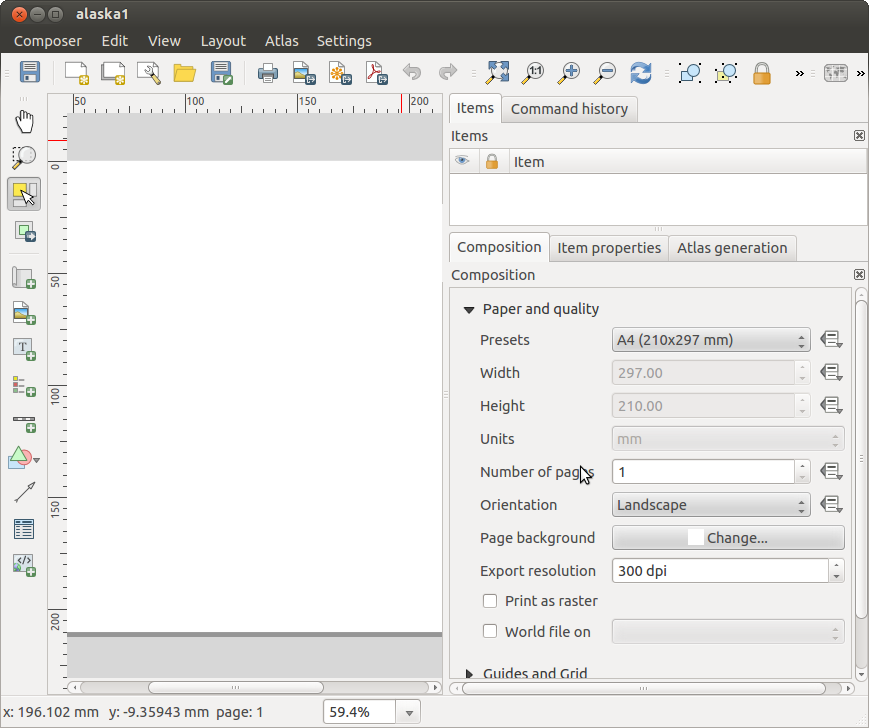


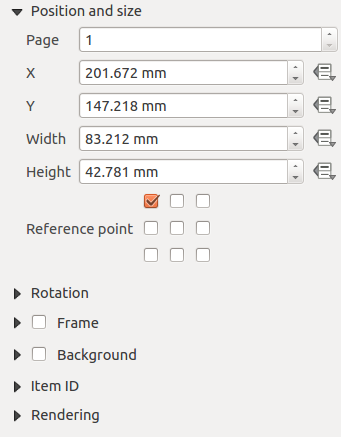
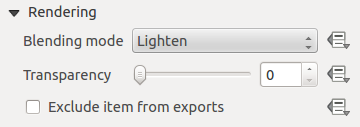
 : You can make the underlying item in the Composer
visible with this tool. Use the slider to adapt the visibility of your item to your needs.
You can also make a precise definition of the percentage of visibility in the menu beside the slider.
: You can make the underlying item in the Composer
visible with this tool. Use the slider to adapt the visibility of your item to your needs.
You can also make a precise definition of the percentage of visibility in the menu beside the slider.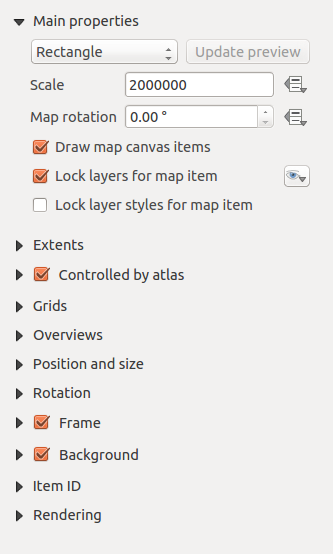
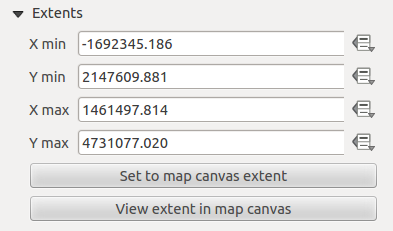

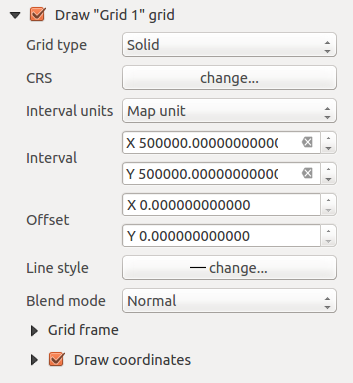
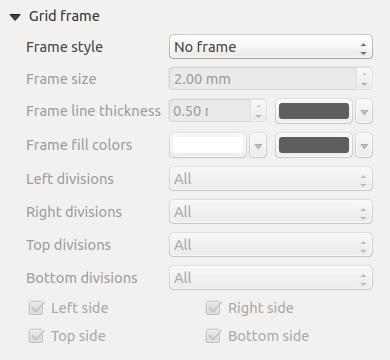
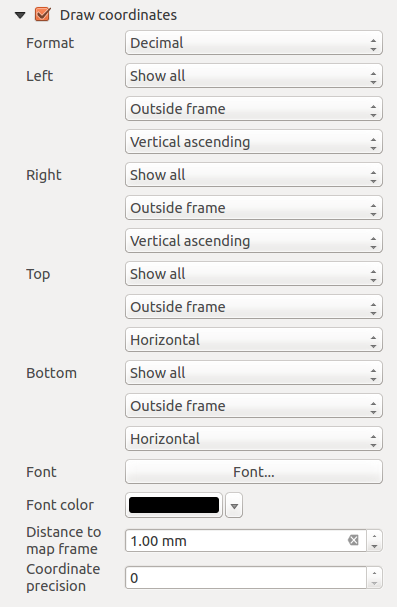

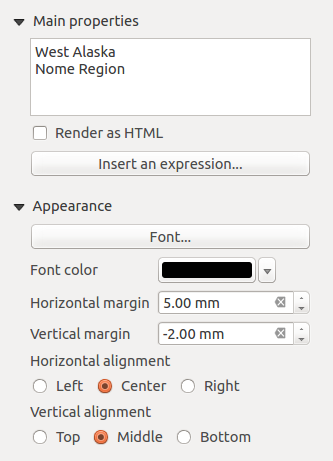
 Center Position the
Horizontal margin feature is disabled.
Center Position the
Horizontal margin feature is disabled.

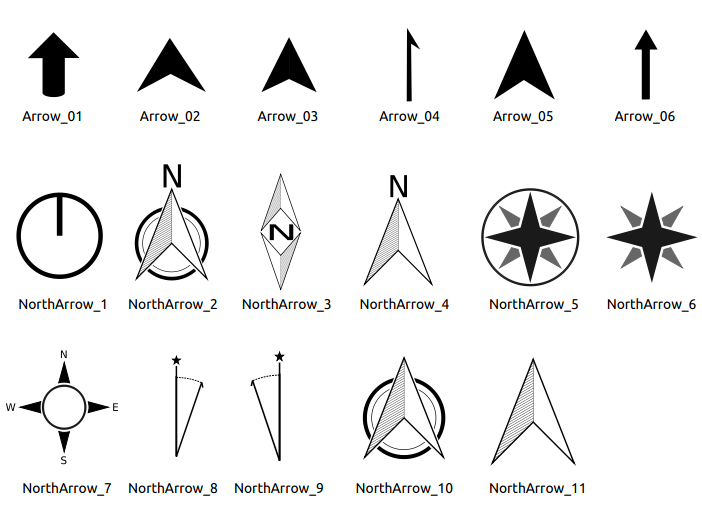
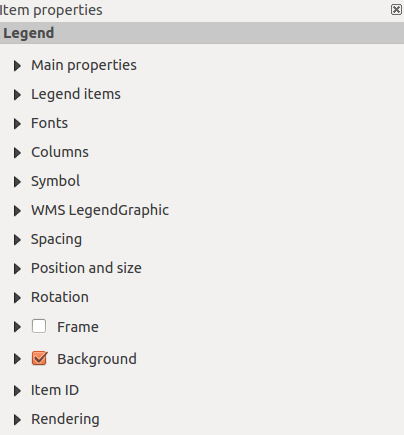
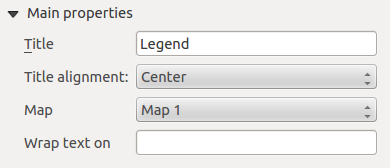
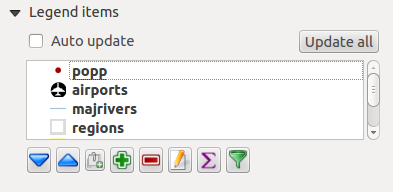
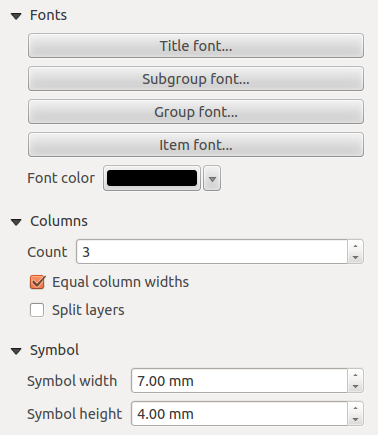
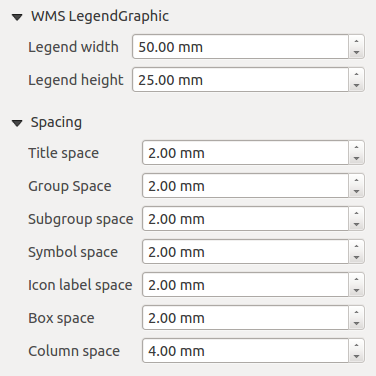


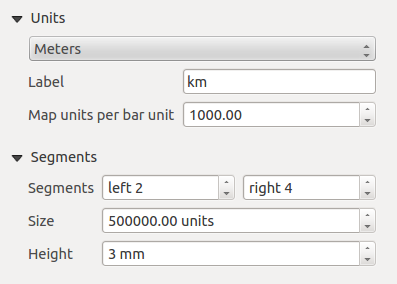
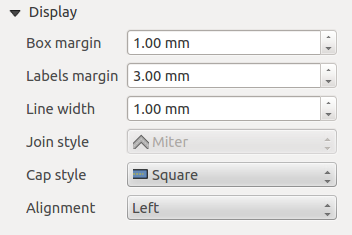
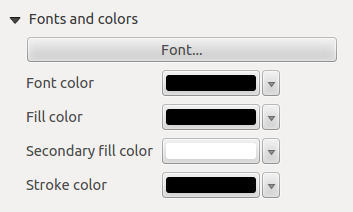
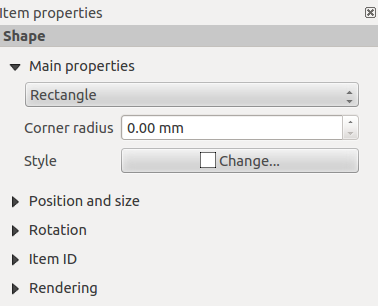
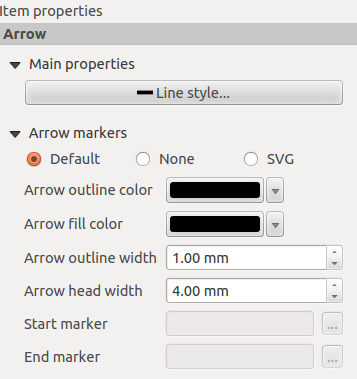
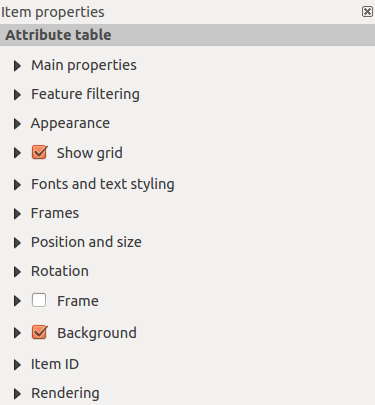
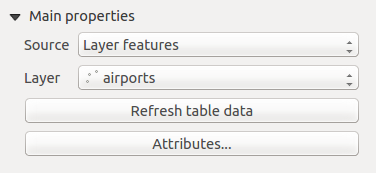

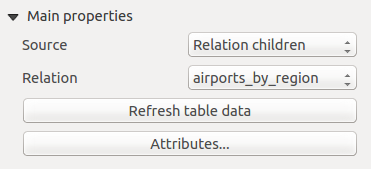
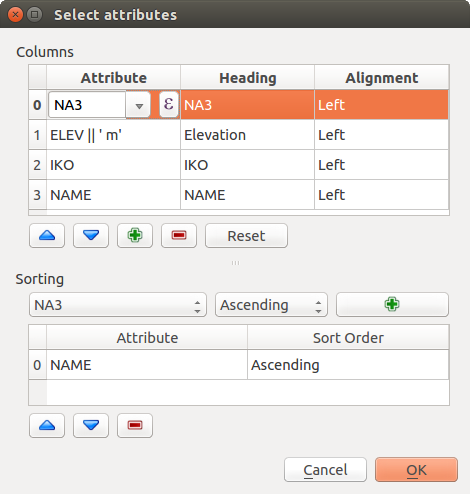
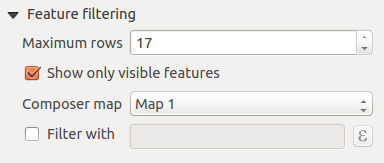
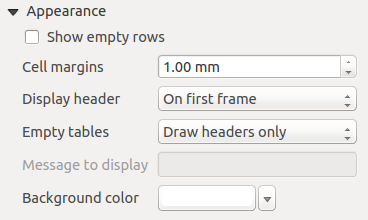

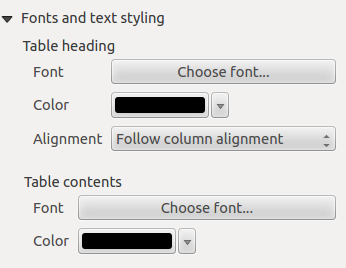
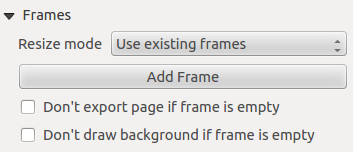
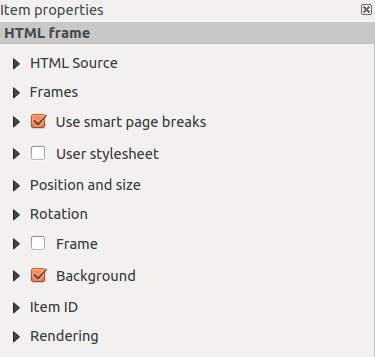
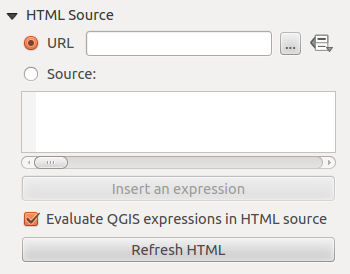
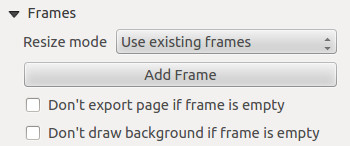
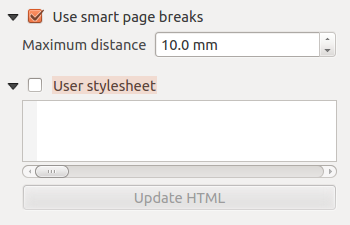
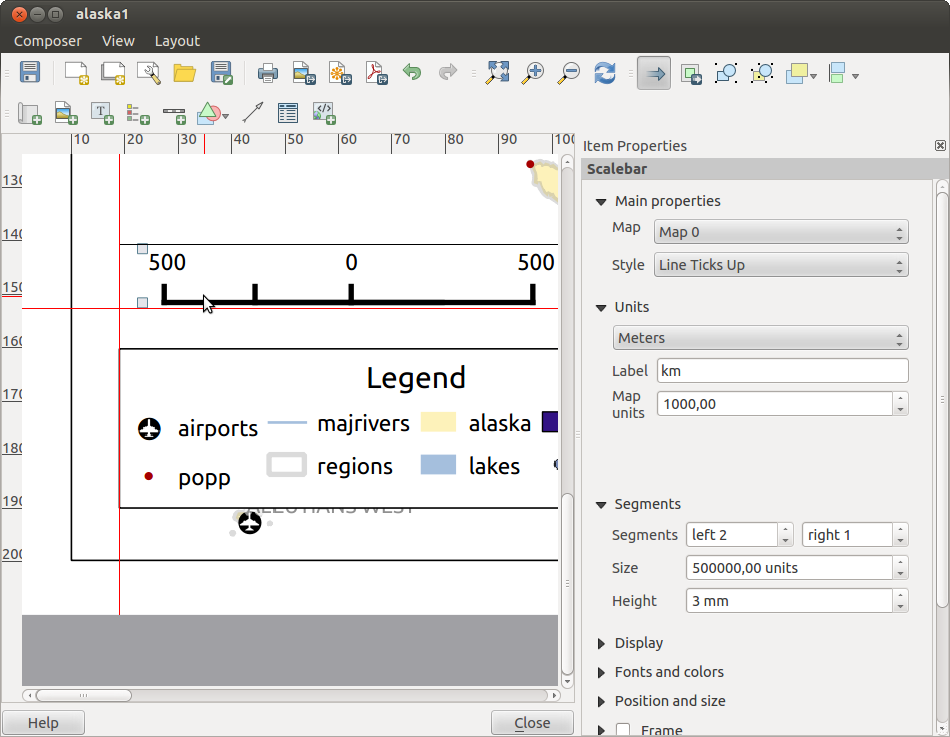
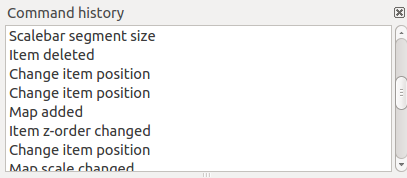
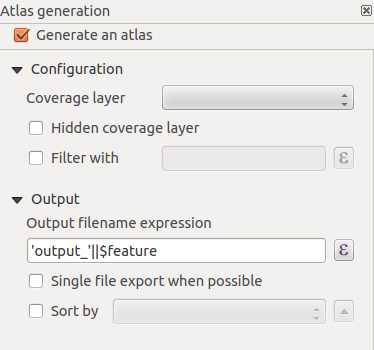

 Predefined scale (best fit). It will use the best fitting option from the list
of predefined scales in your project properties settings (see Project –> Project Properties –> General –> Project Scales
to configure these predefined scales).
Predefined scale (best fit). It will use the best fitting option from the list
of predefined scales in your project properties settings (see Project –> Project Properties –> General –> Project Scales
to configure these predefined scales).